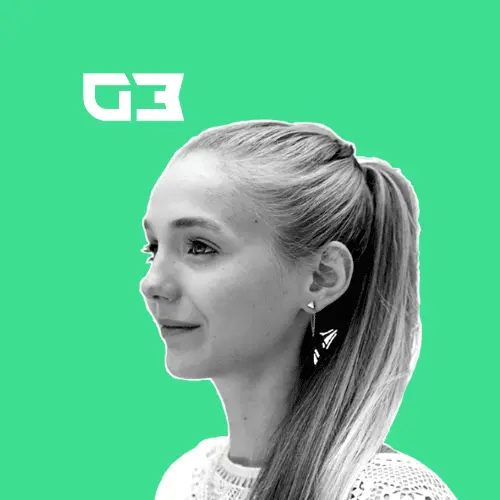This article continues the ongoing series on the On-Equip feature in The Sandbox Game Maker, a toolset that allows creators to build interactive gameplay elements within their experiences. The On-Equip feature lets creators assign actions or effects that activate when a player equips a specific item, adding a layer of interactivity to gameplay mechanics. In this seventh part of the series, the focus shifts to how this functionality can be used to initiate crowd events that promote social interaction or cooperative play among participants.

How To Use The Sandbox Equipment To Make Games
About The Sandbox
The Sandbox gained popularity through its two successful mobile games, The Sandbox (2011) and The Sandbox Evolution (2016), amassing a total of 40 million downloads on iOS and Android. In 2018, developer/Publisher Pixowl made the strategic decision to transition this thriving User Generated Content (UGC) gaming IP and its extensive creator community from mobile to the blockchain ecosystem.
The objective was to innovate the gaming industry by empowering creators with genuine ownership of their creations as non-fungible tokens (NFTs) and incentivizing their engagement in the ecosystem. The Sandbox is now described as a virtual metaverse where players can build, own, and monetize their gaming experiences on the Ethereum blockchain using the platform's utility token SAND.
Introducing Social Mechanics Through Equipment
Incorporating crowd events triggered by equipping certain items allows creators to design more socially driven gameplay. For example, in a multiplayer experience, players might discover unique equipment like dancing shoes. These shoes, once equipped, do not immediately display their full function. Instead, they hint at a further interaction—such as requiring another specific item to unlock their power. In this scenario, the player might be prompted to locate a balloon, which appears in the world only after the shoes are equipped.
When the player picks up the balloon, they unlock the ability to trigger a crowd event, such as a dance party, through a simple keypress. This kind of event is unscripted and driven entirely by the player, offering an opportunity for spontaneous interaction that enhances the social environment of the game. The resulting experience feels more organic and encourages players to engage with others within the world in a playful and cooperative manner.
Step-by-Step Implementation of Crowd Events
To implement this functionality, creators must start by placing the equipment item in the environment. This item should include a Collectable component so that the player can acquire it and store it in their inventory. Messages for both collection and equipment events should be set to broadcast to all players. Once the item is collected, a brief message or hint can be displayed using an Asker behavior or a popup, guiding the player on how to proceed.
The next stage involves setting up a special item that will activate the equipment’s hidden ability. This item, such as a balloon, must be created as a preset and set with a Pickable component. A logic asset configured with a Crowd Event behavior is then attached to this item. Once the balloon is picked up, a message triggers the start of the event. By linking the logic asset to the pickable item through the hierarchy, the crowd event can be made portable, activating wherever the item travels.
To ensure the balloon only appears after the equipment is worn, creators need to place a logic asset in a hidden location and assign it an Asset Spawner behavior. This behavior should be set to respond to the On-Equip message and spawn the balloon preset once. The creator then sets up keypress logic to allow the player to activate the crowd event. A ruleset is added that responds to a specific key, such as the number 1. It checks whether the item was picked up, using a true/false variable updated by the On Picked message. If the condition is met, the Crowd Event message is triggered.
Adjusting Event Triggers and Enhancing Cooperation
This setup can be adjusted to restrict crowd events to specific areas rather than allowing them to occur anywhere. Instead of linking the Crowd Event logic to the pickable item, it can be placed in a fixed location, which activates only when the conditions are met there. Another variation involves requiring players to equip multiple items before the crowd event can be triggered. This requires a rule that counts how many qualifying items have been equipped before enabling the spawner to reveal the special item.
These variations allow creators to implement cooperative mechanics that require teamwork. One potential use is to design a scenario where players discover a crystal during an exploration quest. To unlock a mysterious door, all participating players must perform an emote simultaneously while carrying or equipping specific items. This collaborative task promotes group coordination and enhances the sense of shared achievement.
Using Messages to Drive Interaction
While emotes are a common trigger for crowd events, messages can offer greater flexibility. Objects in The Sandbox can send messages through a range of interactions, such as destruction, spawning, detection, or even keypresses. This opens up multiple creative pathways for designing crowd events that go beyond visual flair to serve gameplay purposes. Messages allow creators to tie crowd events to progression mechanics, rewards, or narrative developments.
Enhancing Gameplay with On-Equip
The On-Equip feature offers a range of creative opportunities for game designers working within The Sandbox Game Maker. Whether used to promote spontaneous social engagement, add depth to cooperative challenges, or enable user-driven experiences, this mechanic contributes significantly to player immersion. The use of On-Equip to trigger crowd events exemplifies how small, well-planned interactions can support larger gameplay goals and contribute to more compelling and interactive environments.
As creators explore the possibilities of web3 game design, features like On-Equip help bridge the gap between player agency and structured gameplay. By integrating logic-based systems with social mechanics, developers can build more inclusive and engaging worlds. Stay tuned for Part 8, which will focus on using equipment to trigger unique quests within The Sandbox.
